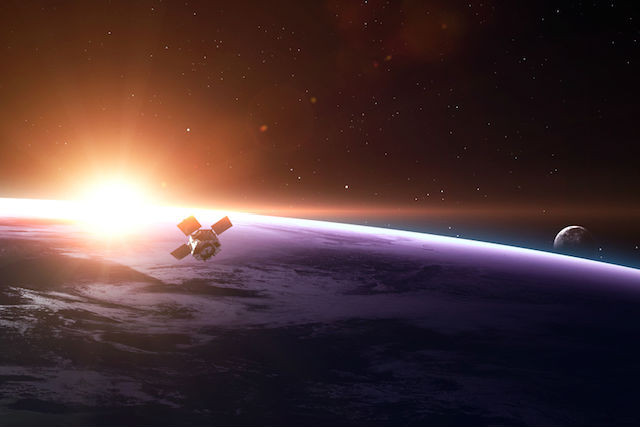Jess Bauldry: Unlike a lot of the newspace companies which moved to Luxembourg after the launch of the SpaceResources.lu initiative, Sparc has a history in Luxembourg. Tell us how the firm got started?
Thorben Meinardus: Sparc Industries sarl was founded in Luxembourg in November 2017. Its cornerstone was laid at Gradel sarl in the department of plasma technologies. Initially developing compact plasma-based neutron generators, two technologies were added later to the portfolio of developments: a satellite engine as well as the simulation of the plasma physics in both the neutron generators as well as the satellite engines. This constellation maximises the impact of technological synergies and technological similarities.
JB: How would you describe plasma to a child?
TM: Well, if you have frozen water, ice, and you heat it up, it will melt and become fluid. When you heat it up again, it will evaporate and become steam. And if you heat it up once more for long enough, it becomes what is called a plasma.
JB: How is plasma used in space and is it used in earth applications too?
TM: What’s interesting is that, as well as being extremely hot, plasma also has a very unique feature - it is able to conduct electricity. Without realising, we see it everywhere. Plasma is, for example, in many lamps. And if you light a candle, there is (weak) plasma around the flame.
In everyday life, we think that what we have here, on the Earth, non-plasma, is what's normal, but that is not the case! The universe consists of 99.9% plasma. Planets like in our solar system are the exception. We use plasma in fields like space flight and nuclear fusion research, but is has many other applications.

Sparc Industries deputy CEO Thorben Meinardus, pictured, studied aerospace engineering and technical biology in 1997 after being inspired by the science fiction films of the '80s and '90s
JB: What are the risks associated with the use of plasma in satellite propulsion?
TM: Plasma as such, is very difficult to handle. It can injure and it can destroy things, but it can also do very good things. In our case, plasma is used as a space propulsion system.
JB: Who are your customers, now and in the future?
TM: Currently we are in the development phase of our software tool and the satellite propulsion.
Sparc Industries addresses some of the most sophisticated questions in the field of plasma-based technologies. Our long-term goal is to drastically reduce the lifetime qualification costs of propulsion systems for telecommunications satellites by increasing the use of simulations and ultimately to make space technology cheaper and thus more accessible.
We see the market for our software in the value chain of telecommunications satellites, among other things. Subsystem suppliers and satellite integrators will be part of our customer base. With our satellite propulsion system we aim at the market for small satellites and CubeSats. Currently, our maintenance service for neutron generators is often requested. From our time at Gradel sarl we have taken over the customers regarding the work with neutron generators.
JB: Why Luxembourg?
TM: For Sparc Industries it is very important to have access to specific, rare and sensitive data. These data sets cannot be found by searching on the internet. You have to ask specific people and companies in order to get access. We find doors are open to us partly because we come from Luxembourg. Luxembourg has the stamp of neutrality and is considered a solid and reliable partner.
Partnerships are an important basis to place products in the community and on the market. We cultivate partnerships worldwide and are constantly networking. Similar to Formula 1, you have to prepare for the race and position yourself as well as possible. As a young start-up this is one of the biggest challenges. The location in Luxembourg is also excellent in this respect. The short lines of communication, direct interaction in the Space Cluster and support from the Technoport team in Belval give us the relevant momentum.
JB: What deployments or announcements are coming up for Sparc Industries?
TM: In April 2019, the first prototype of Sparc’s novel satellite thruster will be put through its paces in a specialised test facility. After successful completion, we aim at developing a complete satellite propulsion system in a consortium. In addition, we have just started a new project and are expanding our team in the next month.
